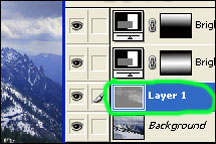Sunday, December 19, 2010
Cucumber Juice Is Good for Health and Skin
Health Benefits of Cucumbers
Cucumbers, Cucumis sativus, belongs in the same family (Cucurbitaceous family) as melon, zucchini, pumpkin, and squash. It has been cultivated for thousands of years and was introduced in the United States by the early colonists.
Similar to watermelon, cucumbers are composed of mostly water, low in calories, and packed with nutrients.
The flesh inside of the cucumber is dense and crunchy, but it is also the part mostly made of water. Its high water content helps keep the body hydrated, helps regulate body temperature, rids the body of excess fluids, and cleanses the body of harmful wastes and toxins. The flesh is a good source of ascorbic acid (vitamin C), caffeic acid, vitamin A, and folic acid.
The hard skin of the cucumber is rich in fiber and is an excellent source of a trace mineral, silica, that helps strengthen connective tissue (including bone, cartilage, ligaments, tendons, and blood vessels). Potassium and magnesium are other important minerals in the skin of cucumbers.
Health Benefits of cucumbers by eating them include:
treating high blood pressure
relieving heartburn
reducing stomach acid (helpful in the treatment of gastritis and ulcers)
supporting bowel regularity
relaxing nerves and muscles
improving blood circulation
repairing cells
eliminating toxins (helpful in the treatment of arthritis and gout)
maintaining healthy skin, hair, nails, teeth, and gums.
Health Benefits of cucumbers when applied topically (cucumber slices or cucumber juice) include treating the following:
swollen and tired eyes
burns and sunburns
inflamed, itchy skin
dry skin and hair growth.
Cucumber Juice Recipes
Fresh cucumber juice:
Blend 8 large cucumbers, 1 piece of fresh ginger root, 1/2 tray of ice cubes, and 2 cups of water. Best if served immediately.
Cucumber/fruit juice:
Blend 1 cucumber, 1 watermelon, and 1 liter of mineral water.
Cucumber juice (good for eliminating toxins):
Blend 1/2 cucumber, 4 carrots, and 1 beet.
Cucumber juice (good for healthy skin):
Blend 1 cucumber, 8 apples, and 6 celery sticks.
To get the full health benefits of cucumbers, you should use all parts (skin and flesh). Unfortunately, many cucumbers found in grocery stores are waxed to protect them during shipping and most waxes should not be ingested. Try to buy cucumbers that have not been waxed and always wash the skin before eating, even if it is organically grown.
Tuesday, December 14, 2010
Thursday, December 9, 2010
Food to eat to increase sperm count and how to keep sperm healthy
5 Foods That Increase Sperm Count, Production, and Motility
1. Red peppers, carrots, oatmeal, dried apricots. The vitamin A in these foods help grow healthy sperm. “Deficiencies in vitamin A in men have been linked to lowered fertility due to sluggish sperm,” writes Heidi Murkoff in What to Expect Before You’re Expecting. To increase sperm count and motility, eat dark green lettuce, broccoli, spinach, sweet potatoes, and dairy fortified with vitamin A.
2. Asparagus, snow peas, cooked tomatoes, strawberries. The vitamin C in these foods affect sperm motility and viability. Vitamin C and vitamin A are found in many of the same foods: kale, red peppers, sweet potatoes, yellow veggies and fruits. The antioxidants in these foods help increase sperm count by decreasing harmful free radicals.
3. Turkey, eggs, seafood, oysters, pumpkin seeds. “Inadequate amounts of zinc an lead to low testosterone levels and diminished sperm count,” writes Heidi Murkoff in What to Expect Before You’re Expecting. Zinc is actually quite widespread – it’s also found in beef, yogurt, oatmeal, corn.
4. Leafy green veggies, avocados, beans, whole grains. Make sure you’re getting enough folic acid, because low levels can lead to birth defects. Men with low levels of folate have more sperm with chromosomal abnormalities. To increase your sperm count, production, and motility, make sure you’re eating lots of dark green veggies and fruit. You may want to consider a folic acid supplement.
5. Salmon, sardines, anchovies, walnuts. “DHA and other essential omega-3 fatty acids help improve blood flow to the genitals and increase sexual function,” writes Heidi Murkoff in What to Expect Before You’re Expecting. “Fertile men’s sperm contains more of this essential fatty acid than the sperm of infertile men.” Other foods high in omega-3 fatty acids include arugula, crab, shrimp, flax, and chicken. To increase sperm count, load up on foods that contain healthy omega-3s!
Zinc is vital for viable sperm count, motility and a high percentage of live sperm in the semen. Zinc is present in semen and therefore men can lose excessive quantities of zinc through ejaculation - therefore it is critical that zinc is replaced through the diet daily. Foods rich in zinc such as lambs, turkeys, barleys, wheat, oysters, beans, nuts, red meats, raw sunflower and pumpkin seeds are considered to be the super-foods that can help to increase the sperm count in men.
Vitamins C, E and especially B12 possess antioxidant properties and are thought to increase sperm production. L-arginine, L-cartinine (amino acids) those are found abundantly in spinach, seaweed (Spirulina), poultry and also in sesame seeds, tuna, turkeys, egg whites are thought to energize the sperms and also to increase their production without affecting any other body system.
Many health care providers believe that simply avoiding frequent dehydration by drinking more than 8 glasses of water a day is sufficient to flush out the body toxins and can help in increase sperm count.
Foods with selenium such as Brazil nuts, tunas, red meats, poultry, eggs, cottage cheese are also favorable in order to increase sperm count. Lycopene found in tomatoes, pink grapefruits, guavas and folate that is greatly found in asparagus, beet roots, broccoli, beans, citrus fruits and other dark green leafy vegetables are advisable for infertile man to increase sperm count.
Some of the foods are found to be interrupting healthy semen production in men's body. Foods listed below are therefore said to inhibit men's capability to produce healthy sperms.
Besides eating above mentioned food stuff, infertile man should:
· Avoid eating refined foods like refined sugar, white flour
· Give up any sort of caffeine such as coffee. Also give up carbonated water.
· Stop eating processed food
· Give up smoking and heavy/binge alcohol consumption
· Stop frequent masturbatingMaca is one of the best foods available to increase sperm count. It is packed full of nutrients, particularly when used as a Certified Organic Powder that is milled in the appropriate way to retain nutritional integrity. Other nutrients required to increase sperm count include calcium, magnesium, chromium and manganese. Laboratory studies of rats have revealed that they enhanced fertility after being provided maca supplements. The female rats increased egg follicle growth and males increased sperm counts.
I also came across this neat article on how to increase sperm health :D
http://drbenkim.com/improve-sperm-count.htm
Strive to reach and maintain a healthy weight for your structure.
Having too much or too little body fat can disrupt production of the following male reproductive hormones:
Gonadotropin releasing hormone (GnRH) - released by the hypothalamus; prompts the pituitary gland to release luteinizing hormone and follicle stimulating hormone.
Luteinizing hormone (LH) - released by the anterior portion of the pituitary gland; tells specialized cells in the testicles to produce testosterone.
Follicle stimulating hormone (FSH) - also released by the anterior pituitary; tells the seminiferous tubules in the testicles to produce sperm.
Testosterone - produced in specialized cells in the testicles; stimulates production of sperm in testicles and increases sex drive.
Because body fat is closely associated with the production of these male reproductive hormones, a man is most likely to produce healthy sperm when he is at a healthy weight for his structure.
Get regular exercise, but don't overdo it.
Being physically active is good for reproductive health, but exercising to exhaustion on a regular basis can disrupt hormone levels in a way that lowers sperm quality.
Strive to feel emotionally balanced.
Emotional stress leads to an increase in cortisol production, which in turn, leads to a number of changes to the male reproductive hormones listed above, which results in lower sperm quality.
Eat foods and/or whole food supplements that are naturally rich in folate, vitamin C, vitamin E, selenium, and zinc.
Folate, selenium, and zinc are particularly important to producing healthy sperm. Vitamins C and E are thought to protect sperm against damage by the environmental stressors listed in the next section.
How to Keep Sperm Healthy
Prevent overheating of testicles.
Tight underwear, prolonged sitting, use of laptop computers directly on one's lap, and even being in a hot working environment can all increase scrotal temperature and decrease sperm count.
Avoid hot baths and hot tubs.
Spending 30 or more minutes in water that is 102 degrees Fahrenheit (40 degrees Celsius) or above can significantly lower sperm count.
Stay away from anabolic steroids, testosterone-based supplements, and anti-androgen drugs.
All of these drugs may reduce fertility by interfering with sperm production. The most commonly used anti-androgen drugs are those prescribed to treatprostate enlargement, prostate cancer, and male pattern baldness.
Avoid tobacco, marijuana, and alcohol.
Avoid cimetidine (Tagamet).
Cimetidine is an over-the-counter drug that is used to treat heartburn and ulcers; regular use of cimetidine is strongly linked with low sperm counts.
Avoid large amounts of coffee.
While a cup of coffee per day isn't likely to reduce fertility, drinking several cups of coffee per day can definitely decrease sperm motility.
Regular use of tobacco (including chewing tobacco), marijuana, and large amounts of alcohol are all strongly linked with low sperm counts. There is even some evidence that suggests that heavy tobacco, marijuana, and alcohol usage can damage the DNA of sperm, which may result in abnormal fetal development and an increased risk of cancer for the next generation.
Beyond heeding the suggestions provided above, it's also important to minimize one's exposure to toxic chemicals that are linked with reduced fertility in males and females.
Wednesday, December 1, 2010
Article - Antioxidants help slow down the ‘rusting’ of the human body
Wednesday December 1, 2010
Antioxidants help slow down the ‘rusting’ of the human body
TRUE HEALTH
By Dr C.S. FOO
AN apple turns brown or a nail gets rusty due to oxidation. The same process occurs within us. We do not change colour or become rusty, but the tell tale signs come later as “wear and tear” in ageing, poor health, or chronic diseases.
We often blame our genes for our maladies, but environmental factors and lifestyle choices account for as much as 70% for the apple inside us turning brown too fast, too soon.
If we smear some lemon juice on a cut half of an apple, the browning process is retarded as the lemon slows down the oxidation process, hence conferring an antioxidant effect to the apple.
As we are more complex than an apple, smearing ourselves with lemon just would not work!
Antioxidants were first applied in industrial use two centuries ago to protect materials such as rubber from degradation, and was later introduced to preserve certain foods and oils to extend shelf life.
It was only 60 years ago that its significance in human physiology was recognised.
But doctors were so busy battling diseases that, until recently, the protective role of antioxidants has not been fully appreciated.
To be honest, yours truly had no idea what they really were. My only knowledge of antioxidants was restricted to oranges and wine. I thought “free radicals” was a new political party!
We now know that they are the culprits in causing oxidation within us, and antioxidants neutralise them.
The word antioxidants conjures much excitement and sometimes emotions as there are many claims and counter claims. Earlier studies showed great promise on health, later ones disputed that, and on it goes like a yo-yo. The subject is extremely confusing and this discussion tries to put them into separate baskets for ease of mental digestion.
There is a plethora of antioxidants in our foods, chiefly found in fruits and vegetables: the more coloured and pigmented, the richer it is in antioxidant content.
Variety is the key to good health and the more the merrier. The American Cancer Society recommends at least five servings of fruits and vegetables per day to prevent cancer. Trying to keep the doctor away by having an apple a day is a myth ... it is not enough! One can try five, and that still would not be enough.
To illustrate: the level of vitamin E known to effectively combat oxidative stress is 400IU. If one eats spinach only or has a girlfriend called Olive, the poor fellow has to consume 12.7kg of the vegetable to get the optimal level of vitamin E.
Apart from indigestion, Popeye probably has staghorn kidney stones, considering the amount of oxalates found in spinach.
Unlike Homo sapiens, antioxidants work in a synergistic fashion. Each is like an instrument in a philharmonic orchestra, playing the right note, at the right pitch and tempo, and supporting the other performers elegantly. The flawless symphony within is the key to anti-ageing and prevention of chronic diseases.
Some are water-soluble and work only in fluid compartments; some are fat-soluble, protecting the lipids in cell membranes. Some work outside the cells, and some only within.
The brain is a private club allowing entry only to members of valued standing. Among the select antioxidants that has an entry ticket is vitamin C and a family of powerful protectors known as OPC (oligomeric proanthocyanidins, found in grapeseed extract). Together they form a duet in quelling free radicals in the headquarters of our very existence.
As much has been unraveled about the role of antitoxidants, it is now no longer relegated to the cloakroom of science or the twilight zone of alternative medicine. It is only the naive or the incalcitrant mind that rejects its significance. We were already endowed with it when man first walked the earth, and he had the foresight to eat apples as an additional booster, as ancient script goes.
The dreaded free radical that brings forth harm is known as “superoxide”, an unstable oxygen molecule, resulting from churning up energy in the body. To render this harmless, our cells possess an antioxidant enzyme called superoxide dismutase. Together with catalase and glutathione peroxidase, they complete the job of snuffing out the smoke, thereby preventing the free radicals from wantonly zapping our cells.
On top of this, our body also produces co-enzyme Q10, which is an in-house antioxidant in the power plant (mitochondria) within our cells. It recruits a helper in the form of alpha-lipoic acid to clean up the mess.
Did you know that uric acid is also an antioxidant? This is not a reason to gobble down pots of meat – bone tea (literal hokkien translation) in excess will cause a pretty painful joint, or worse, excruciating back pain with blood in the urine due to kidney stones.
The moral of the story: do not raise the level of the wrong antioxidant. Not all things natural are always good.
Primary antioxidants
Early research centred around vitamins A, C and E, which are collectively known as primary antioxidants. They are called essential nutrients because the human body cannot do without them. Since we cannot manufacture vitamins, they must be derived from the diet.
The plant form of vitamin A is called beta-carotene (a pro vitamin), found in carrots, papaya, berries, pumpkins, etc. The body converts this precursor to vitamin A as and when it is needed. However, too much intake will cause harmless discolouration of the palms. Both vitamins A and E are fat-soluble, thus preventing the oxidation of lipids within the cell membrane.
On the other hand, vitamin C is water-soluble and mops up the free radical burden from the blood.
Supporting antioxidants
Under this category are the “others”. They are not absolutely a must, but do a whole lot of good if they are available. The bioflavanoids, carotenoids, and polyphenols are essentially derived from plants and are collectively called phytonutrients. The number of compounds within these groups is mind boggling and only a few are highlighted for enlightenment.
> OPC (oligomeric proanthocyanidins), found in seeds of the red grape (commercially as grape seed extract), is a potent antioxidant, aiding in the ridding of free radicals both in the water and fat compartments of the body.
> Isoflavones derived from soy offers itself as a weak oestrogen, and relieves menopausal symptoms.
> Lycopene is found in tomatoes but enriched when pureed. It has been found to reduce the risk of bladder cancer.
> Lutein, found in dark green leafy vegetables, protect the eyes and slow down the onset and progression of a chronic eye disease (macular degeneration).
> Quercetin is derived from fruits, grains, and vegetables.
> Catechins found in tea is an excellent antioxidant.
The list is exhaustive and includes gingko biloba, zexanthine, hesperidin, etc.
> The quintet: Five good friends form an antioxidant network, namely vitamin C, vitamin E, glutathione, alpha-lipoic acid, and finally CoQ10. They support each other by interactive regeneration. When vitamin C has done its job, instead of being discarded, it is reactivated by vitamin E. Gluthathione regenerates vitamin E. Alpha-lipoic acid recycles coenzyme Q10. Together, this five-piece quintet harmoniously delivers a masterpiece.
> The antioxidant minerals: These are not themselves antioxidants but help to replenish the endogenous antioxidant status. Selenium (found in shell-fish, eggs, chicken, garlic, etc) is needed to build up the level of glutatione. Manganese, copper, and zinc are trace minerals which help to boost up the level of superoxide dismutase.
Science is only beginning to unravel the many intricate mysteries within us, so there will necessarily be debates as illustrated by the many conflicting views that is beyond the scope of this discussion.
Suffice to point out that applying drug study models and expecting each antioxidant to work independently like a pharmacological agent in sick patients is illogical and often produces the contradictory results that we rant about. Antioxidants are not drugs and are part of the body’s defence and healing system. Until there is a full appraisal of this wondrous orchestra without leaving out a single instrument, we may never hear the true music.
We can view antioxidants in three concentric rings. Replenishing the inner circle of natural antioxidants takes centre stage, followed by the middle circle of primary antioxidants, and finally giving the outer circle (“the others” supporting antioxidants) its deserved attention.
Most people rave about a new discovery in “the others” category as the next magic bullet, and we have all seen quite a few of these. Incidentally, selenium created a wave of interest in 2002, following a study that revealed that men taking 200ug of the mineral a day seem to have lower incidence of prostate and colon cancer.
A sales representative tried to promote the supplement two years later and asked if I had heard about this study. I can remember the incredulous look on his face when I said “No”. I almost chased him out of my room. Thinking aloud then, I wondered how this guy had the guts to sell a nutritional supplement to a doctor.
Today, if I ever have the opportunity to meet him again, I would apologise and thank him. To many of my friends, I have this advice – do not let naivety and scepticism cheat you of good health.
Being both naive and sceptical, I paid the full fare for my folly. Fortunately, not too long ago, I heard the beautiful symphony of the antioxidants and I now share the notes with you. If our car needs anti-rust, so do we!
Saturday, November 13, 2010
張宇 - 用心良苦
張宇 用心良苦
專輯: 用心良苦 (1993)
周華健 - 朋友
周華健 朋友
專輯: 朋友 (1997)
伍思凱 - 特別的愛給特別的你
伍思凱 特別的愛給特別的你
專輯: 特別的愛給特別的你 (1990)
張洪量 - 妳知道我在等妳嗎
莫名我就喜歡妳 深深地愛上妳 從見到妳的那一天起 妳知道我在等妳嗎 妳如果真的在乎我 又怎會讓無盡的夜陪我渡過 妳知道我在等妳嗎 妳如果真的在乎我 又怎會讓握花的手在風中顫抖 莫名我就喜歡你 深深地愛上妳 在黑夜裡 傾聽妳的聲音http://www.chlyrics.net/idx.php/act-lrc/sid-668/did-4081/lid-42438
Ghim says:Ghim Yee Tang: 又怎會讓無盡的夜陪我渡過 <--- literally it means: how can you let me endure the endless night Ghim Yee Tang: real meaning: why u can let me feel so lonely in the night alone.. Ghim Yee Tang: something like that Ghim Yee Tang: 又怎會讓握花的手在風中顫抖 <--- how can u let my hand which is holding the flower..shivering in cold when wind blows... Ghim Yee Tang: real meaning: why let me wait endlessly holding flower waiting alone for nothing... Ghim Yee Tang: kind of that meaning... Ghim Yee Tang: err...get wat i mean ma..
Wednesday, November 10, 2010
Thursday, October 28, 2010
How to retouch and edit nice landscape photos
This tutorial is to help you learn how to adjust landscape photos to bring out the detail of the background and horizon. Much of the time a digital camera will bring out the colors more in the foreground, but with this tutorial you can learn how to emphasize the whole scene. Ok, once you have your picture open in photoshop:
1. First of all, create a New Brightness/Contrast Adjustment Layer (Layer>New Adjustment Layer>Brightness/Contrast). Adjust the Brightness and Contrast until the Background looks good, don’t worry about the Foreground. For this photo I set the Brightness to 19 and the Contrast to 14.
2. Then Select the Gradient Tool (G) and choose the kind called the Reflected Gradient. Then with the Adjustment Layer mask selected, drag the gradient tool from the top of the photo to a little past halfway in the photo.
3. Then for this photo, I repeated steps one and two but used the Gradient to only include the clouds and sky to bring out more detail in the sky.
4. Then Create a New Layer (Layer>New>Layer) and when the New Layer Dialog box comes up Choose Overlay from the Mode drop menu, and Then check the box that says, “Fill with Overlay-neutral color (50% gray)”
5. Then Choose and big soft paintbrush and To Brighten Areas: with the color white carefully stroke your paintbrush on the Overlay layer that you created. And To Darken Areas: with the colorblack carefully stroke your paintbrush on the Overlay layer that you created. For more Instruction on Steps 4 and 5 please refer to our tutorial on “Professional Brightening Techniques.”
With this technique you can make any regular landscape photo look very professional. And each step is completely customizable to work with different photos. For different photos, the process and amount of adjustment won’t be exactly the same.





